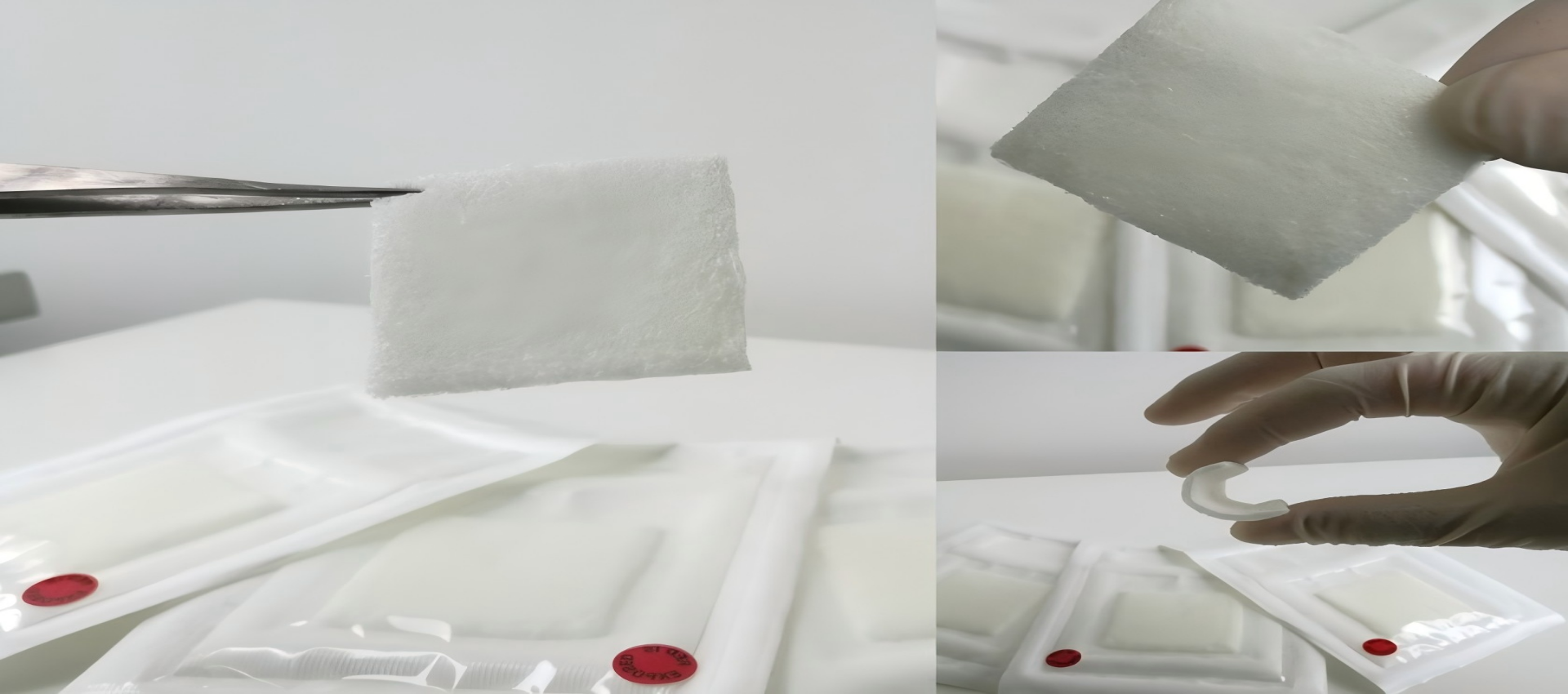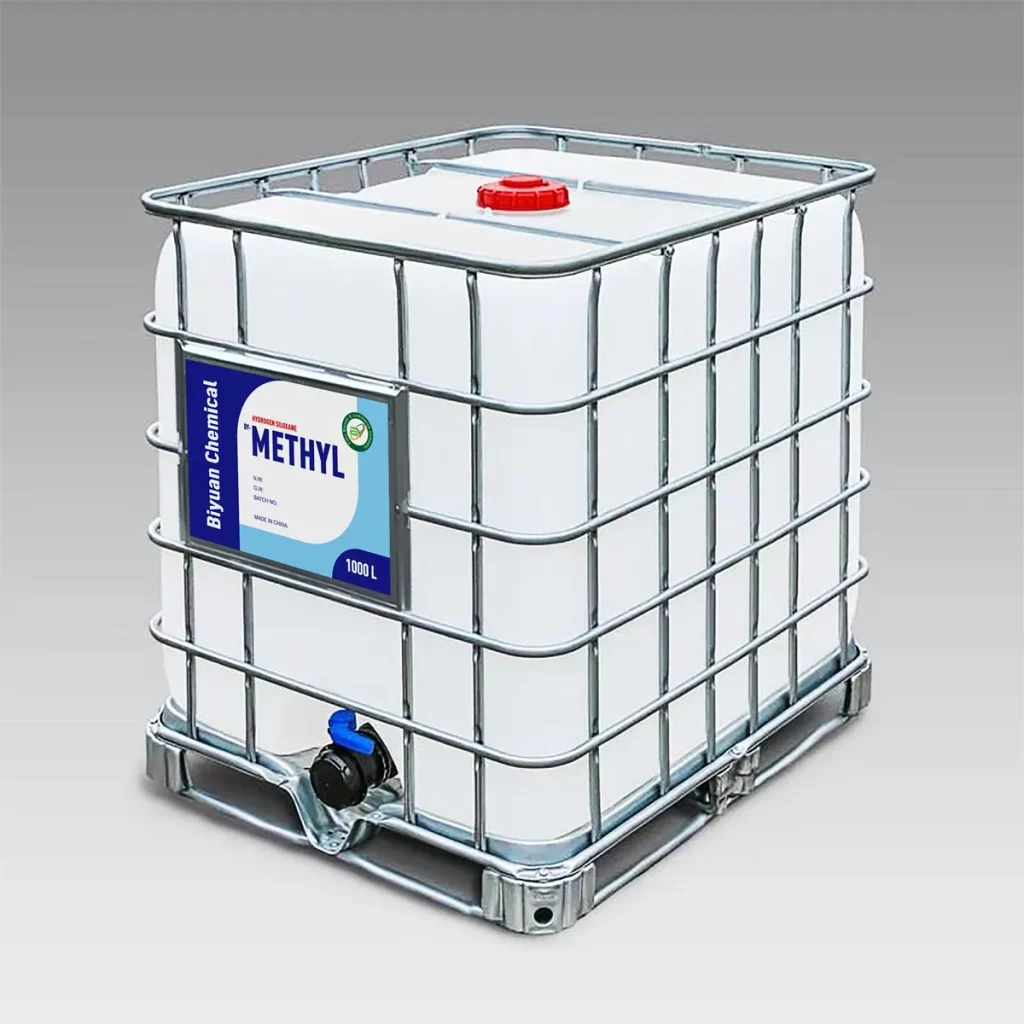
Methyl Hydrogen Silicone Fluid Factory

Methyl Hydrogen Silicone Fluid
Everything you need to know about our products and company
Methyl hydrogen siloxane serves as a multifunctional additive that significantly improves processing characteristics and final properties in silicone rubber applications. This specialized silicone fluid features reactive Si-H groups that enable efficient cross-linking through hydrosilylation reactions with vinyl-functionalized silicone rubbers.
In high-temperature vulcanization (HTV) systems, it acts as an effective cross-linking agent that increases curing speed by over 50% while providing precise control over cross-linking density. This results in enhanced tear strength (40% improvement) and extended service temperature resistance up to 200°C, making it ideal for demanding automotive and industrial applications.
For liquid silicone rubber (LSR) formulations, Methyl hydrogen siloxane effectively eliminates bubble formation during curing, reducing porosity by 90% while improving flow characteristics and mold release properties. It significantly enhances adhesion to various substrates including metals and plastics, achieving peel strength values of 4.5 kN/m.
Certified to FDA and USP Class VI standards, hydrogen-containing silicone oil finds widespread use in medical and food-grade silicone products. With precisely controllable hydrogen content (0.01%-1.6%) and molecular weight distribution, it provides tailored solutions for various performance requirements, establishing itself as an essential material for developing high-performance silicone rubber products.
Basic Product Information
TYPICAL PROPERTIES
| Appearance | colorless transparent liquid |
| Viscosity (25℃),mm2/s | 20-250 |
| H% (wt) | 0.04-1.45 |
| Volatile content(150℃,3h),% | ≤11 |
For more specifications,Please email us for detail
Physical Properties
Chemical Properties

Product Functions
Replaces traditional peroxide vulcanization, enabling byproduct- and odor-free curing.
Improves silicone rubber properties:
Tensile strength
Rebound resilience
Aging resistance
Shortens vulcanization time
Reduces energy consumption
Ideal for precision molding applications
Applications
Baby bottle nipples
Medical catheters
Electronic sealing components
Automotive seals
Industrial cables
Keyboard keypads
Conductive silicones: EMI shielding applications
Flame-retardant silicones: UL94 V0 certification
Optically transparent silicones: LED encapsulation
Release coatings
Adhesive layers for medical dressings
Core Advantages
| Advantage | Industry Value | Data Support |
| Eco-Safety | Eliminates peroxide decomposition by-products | Compliant with FDA and EU 10/2011 certifications |
| High Reaction Efficiency | 30% faster vulcanization speed | Full curing within 5 minutes under platinum catalysis |
| Low Shrinkage Rate | Precision part dimensional tolerance <0.1% | Meets ISO 3302-1 standards |
| Extreme Environment Resistance | Stable performance from -50°C to 250°C | Strength retention >90% after high-temperature aging |
| Adjustable Flexibility | Shore A hardness range: 10A–80A | Customizable cross-linking density |
Market Value
Global Market Overview
Market Size
2023 Market Size: USD 850–920 million
Share of Silicone Rubber Auxiliaries Market: 35–38%
2025 Projection: USD 1.1–1.2 billion (CAGR 9–11%)
2030 Outlook: USD 1.6–1.8 billion
Technological Innovation Value
Platinum-Catalyzed Addition:
Inhibitor technology (controllable induction time)
30% faster curing speed
Performance Metrics:
Tear strength ≥25 kN/m
Compression set ≤15%
Thermal Conductivity Enhancement:
Boron nitride composites (thermal conductivity ≥1.5 W/m·K)
2025 market size: USD 250 million
Conductive Modification:
Carbon nanotube dispersion (volume resistivity: 10³–10⁶ Ω·cm)
Annual growth rate: 20–25%
Solvent-Free Processes:
VOC emissions ≤10 g/kg
EU REACH compliant
Bio-based Feedstocks:
30% substitution with castor oil derivatives
40% reduction in carbon footprint
Experimental Data & Case Studies
Liquid Silicone Rubber (LSR) Applications
Tensile Strength: 10–15 MPa (ASTM D412)
Tear Strength: 25–35 kN/m
Vulcanization Time: Reduced to 30 seconds at 120°C, achieving 40% efficiency improvement vs. peroxide vulcanization.
A global maternal-infant brand:
Adopted hydrogen silicone oil-vulcanized nipples, passing EN 1400 certification with 25% yield rate improvement.
High-Temperature Vulcanized Silicone Rubber (HTV) Applications
Compression Set: <15% after 150°C × 1000h aging (ASTM D395).
New energy vehicle battery pack sealing:
Hydrogen silicone oil-modified silicone passed IP67 waterproof testing, ensuring 10-year service life.
Specialty Silicone Modifications
Preparation Methods, Core Technologies & Precautions
Preparation Methods
Raw Material Preparation:
Main components: Octamethylcyclotetrasiloxane (D4), hydrogen-containing end-capper (e.g., 1,1,3,3-tetramethyldisiloxane).
Catalyst: Tetramethylammonium silanolate.
Pre-treatment: Strict purity testing and impurity removal to meet production standards.
Polymerization Reaction:
Feed materials into a reactor in specific ratios.
Conditions: Temperature 80–120°C, controlled pressure.
Initiate polymerization with catalyst under continuous stirring to ensure uniformity.
Monitor viscosity increase during the reaction.
End-Capping Reaction:
Add end-capping agent (e.g., trimethylchlorosilane) to terminate chain growth.
Achieve controlled polymer molecular weight.
Post-Treatment:
Remove unreacted monomers, low-boiling impurities, and catalysts via vacuum distillation.
Filter to obtain purified hydrogen silicone oil.
Raw Material Preparation:
Oil phase: D4, hydrogen-containing end-capper, and emulsifier (e.g., sodium dodecyl sulfate).
Aqueous phase: Initiator solution (e.g., potassium persulfate in deionized water).
Emulsification:
Slowly add oil phase to aqueous phase under high-speed stirring.
Control stirring speed and temperature to ensure uniform emulsion droplet size.
Polymerization:
Heat emulsion to 60–80°C.
Add initiator to generate free radicals, triggering polymerization of D4 and end-capper.
Form hydrogen silicone oil emulsion.
Post-Treatment:
Demulsify, wash, and dry to convert emulsion into solid product.
Dissolve and filter to refine the final hydrogen silicone oil.
Core Technologies
Catalyst Development:
High-activity, high-selectivity catalysts for precise control of reaction rate and molecular weight distribution.
Catalyst recycling technology to reduce costs and environmental impact.
Molecular Weight Control:
Precise adjustment via raw material ratios, temperature, reaction time, and end-capper dosage.
Target molecular weight ranges for specific silicone rubber performance.
Impurity Removal:
Advanced purification (precision distillation, adsorption filtration) to eliminate byproducts.
Ensure purity >99% and stable product quality.
Emulsion Stability Control:
Optimize emulsifier type, dosage, and process parameters to prevent phase separation.
Reaction Kinetics:
Regulate initiator dosage, temperature, and time to control polymerization rate and product structure.
Continuous Production:
Develop automated post-treatment (demulsification, drying) for higher efficiency and consistency.
Precautions
Avoid Contaminants: Sulfur, phosphorus, and amine-containing compounds (risk of Pt catalyst poisoning).
Storage: Sealed in light-proof containers below 25°C; shelf life 12 months.
Packaging & Ordering
Packaging: 200kg/1000kg plastic drums (customizable).
Our most popular products loved by customers worldwide
Methyl hydrogen siloxane serves as a multifunctional additive that significantly improves processing characteristics and final properties in silicone rubber applications. This specialized silicone fluid features reactive Si-H groups that enable efficient cross-linking through hydrosilylation reactions with vinyl-functionalized silicone rubbers. .
Medical-grade Methyl hydrogen siloxane serves as a versatile functional material in healthcare applications, combining high purity with reactive Si-H groups for enhanced performance. This specialized silicone fluid enables precise cross-linking in implantable devices, provides controlled drug release matrices, and creates anti-fouling surface coa.
Methyl hydrogen siloxane serves as a versatile functional additive in personal care products, leveraging its unique Si-H reactivity and silicone properties to deliver enhanced performance across various applications. This specialized material acts as an effective cross-linker in hair care products, creating durable yet flexible films that provide.
Methyl hydrogen siloxane serves as a innovative processing aid that enhances both the efficiency of leather manufacturing and the quality of finished products. This reactive silicone fluid improves leather softness and flexibility through effective fiber lubrication and molecular-level modification. Its unique chemical properties enable superior .